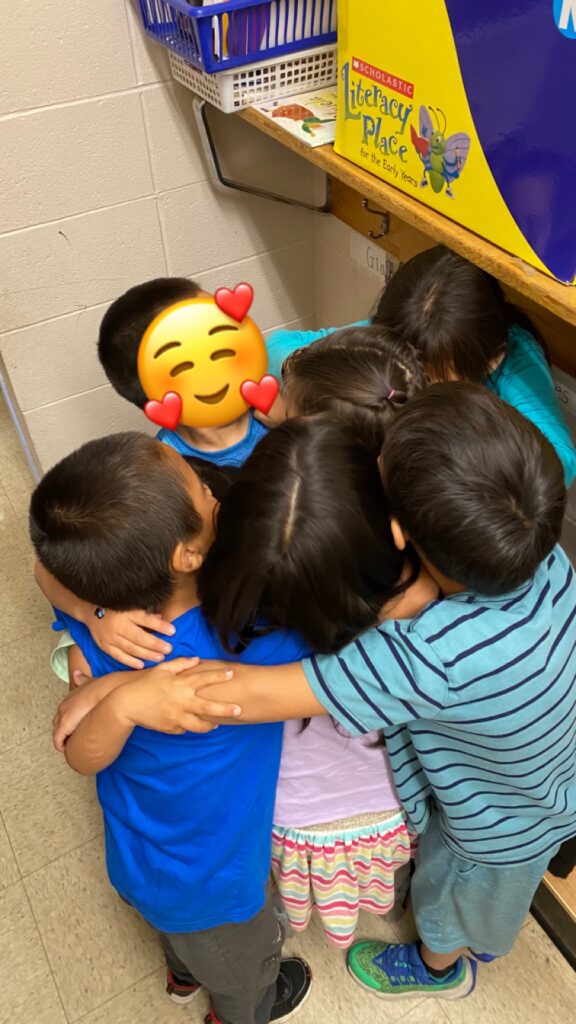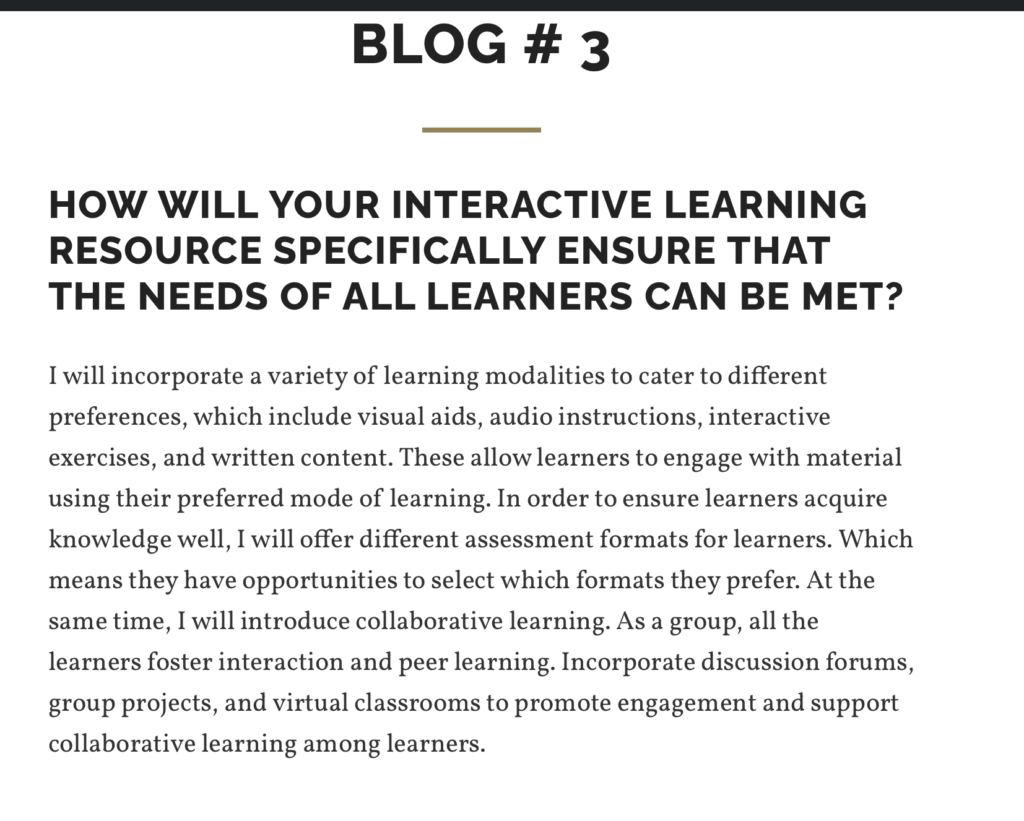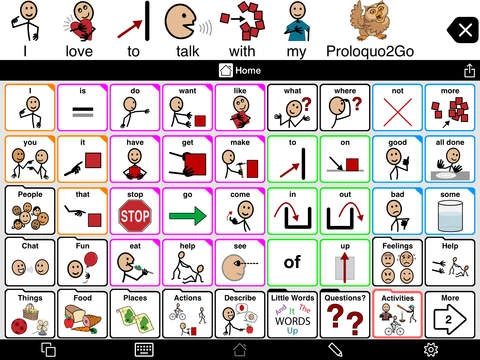How will your interactive learning resource ensure that all learners’ needs can be met?

When I started teaching this year I knew the demographic I was teaching required considerations to support student success. However, nothing truly prepared me to anticipate so many different needs. I teach a class where 88% of the students require speech support and 40% of the class requires the use of AAC or augmentative and alternative communication. This was not something I had fully prepared for in regard to my classroom setup and planning. However, now taking into consideration the accessibility of speech, visuals, and other forms of communication is of the utmost importance to me. I share this because when thinking about learning design and creating an inclusive space for all learners to thrive we often miss things. We cannot always anticipate what a student will need the important thing is to be responsive, and change as you move forward.
My resource is an interactive blog that allows students to engage at their own pace. Each lesson can be facilitated in a familiar safe setting, free of a time limit, or required access time slot. This helps students with various forms of anxiety, students who may have complicated schedules, and students who require extended time. The resource is also easy to access and reaccess to allow students to pause and come back if they need to digest the learning in smaller chunks.
As far as physical needs because the resource is online it allows assistive technology such as enhancing the size for vision needs, text-to-speech if reading is tricky, and speech-to-text if someone is unable to type. Implemented in the lessons are audio files, examples, visuals, and alternative ways to participate. Our entire unit is also focused on a variety of ways to engage with the same topic allowing students an introduction to many different art forms that vary in what is being engaged. For example, music might be easier for some while hands-on ceramics or painting is easier for others. Our goal is to allow all students access.
References
“Inclusive Learning Design – EDCI 335.” Educational Technology at the University of Victoria, https://edtechuvic.ca/edci335/inclusive-learning-design/. Accessed 25 June 2023.
Salameh, Janine. “Access to Alternative and Augmentative Communication (AAC) Equipment by Michillinda Yao IL LEND.” 13 Feb. 2020, https://www.illinoislend.org/new-blog/2020/2/13/access-to-alternative-and-augmentative-communication-aac-equipment-by-michillinda-yao.

Rick, I enjoyed that one of the ways you created an inclusive design was through the idea of choice. In a trauma-informed setting, choice can be your most powerful tool. So often, especially young students, do not often get the power of choice. We choose so much for them and so creating learning environments which utilize choice builds emotional safety and student buy-in. Creating the ability to choose between activities allows students to feel safe in the activity, have control over their day, and participate in an environment they feel comfortable in. I appreciate your thoughtful adaptations and considerations.

Stephanie, your first point equity versus equality made me even more excited about your resource. Equity is so important and not discussed enough. Although I took many of the same considerations into my work I did not outline how I was going to communicate that to my learners. Being a safe teacher and person for our students is the most important thing. Facilitating an online course creates a level of divide between your students and yourself. Taking a conscious moment to communicate with your students how you will support, teach, and care for them taking into consideration how they are a whole person is so important. Reading your post reminded me just how important it is to have my students not only be seen in the media and work I create but have them know I am here for them.

Hi Gracen,
I absolutely love your post! I think it touches on some very important aspects of creating a universal learning design. I thought the way you incorporated an audio component to read your blog aloud was really awesome. As a learner, I have discovered that I struggle to retain information when I am solely relying on reading extensive amounts of text for an extended period. Hence, having the option to listen to your blog and actually think about the ideas you discuss is absolutely fantastic. Thank you for recognizing the diverse learning preferences of your learners and providing an inclusive experience. Your thoughtful approach not only enhances the accessibility of your content but also demonstrates your commitment to engaging readers in a way that resonates with their individual learning styles, which is so so important for their success! I truly enjoyed your post and commend you for incorporating the audio component. From what you touch on in your blog I believe you will make a significant difference in student’s ability to absorb and reflect upon the information you share. Keep up the amazing work!
Chloe
Hi Gracen! I just wanted to thank you for incorporating one of the CAST principles – various means of representation – not only into your teaching but also into this blog. It’s so true, as teachers, we cannot be fully prepared to meet diverse students’ needs; all we can do is adjust our teaching strategies as we go!
I can only imagine how challenging it could be to teach a class where a large portion of the students requires speech support, especially for the first time! It takes a lot of dedication and effort to ensure that every student can learn and participate in the classroom. I appreciate your efforts to make learning accessible and inclusive for all students.
I am a behavioural interventionist and this is so true, I think that it is so important to be able to have alternative ways of learning in the classroom. While some students have troubles with a traditional school setting I think that more and more teachers are doing a fantastic job at developing different ways and approaches towards what learning looks like across the other groups of individuals. Teaching is one of the most challenging jobs in the world, and being able to be so creative with different approaches really helps those individuals who are needing that extra help. In my own experience I have had non verbal learners who are amazing at communicating in other forms and that has really taught me a lot about the different ways in which people can communicate.